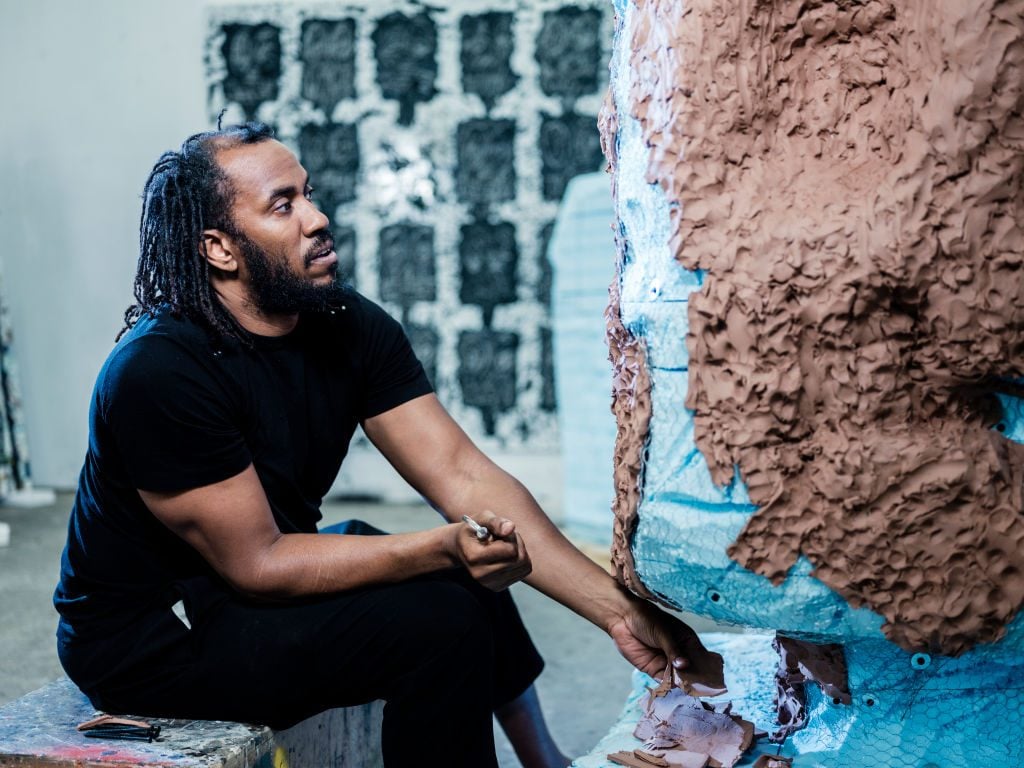Museums rely on artists to create compelling exhibitions, public programming, and sometimes even promotional materials. But during this unprecedented year, they’ve been leaning on them more than ever for something else, too: fundraising.
As many donors pull back from giving or feel institutions’ needs dwarf what they can offer, museums have upped the ante with an irresistible draw: the opportunity to buy art that collectors might not otherwise have access to. As the need for funding grows greater and hits institutions of all sizes, artists are increasingly offering up their work—and their time—to help the cause.
“Institutions are under a tremendous amount of stress right now,” the artist Rashid Johnson tells Artnet News. “Particularly in the US where there isn’t a lot of government assistance for cultural institutions, they have become incredibly dependent on patronage, and artists have been some of the most effective fundraising tools.”
While institutions have always depended on artists to help attract donors—since feeling embedded in an artistic milieu is part of what draws philanthropists to the sector in the first place—demand seems to have increased in line with a growing need. “I’m being asked to donate as much as I ever have, if not a little bit more,” says Johnson, whose name crops up again and again in catalogues for charitable fundraisers.
He is far from the only one stepping up to the plate. Artists of all stripes are designing face masks to crowdfund for the Contemporary Art Society, producing limited-edition prints in the name of the New York Academy of Art, and donating expensive original works to fundraise for American museums. The generosity has been pouring in—but is it sustainable?
At the Mercy of Private Donors
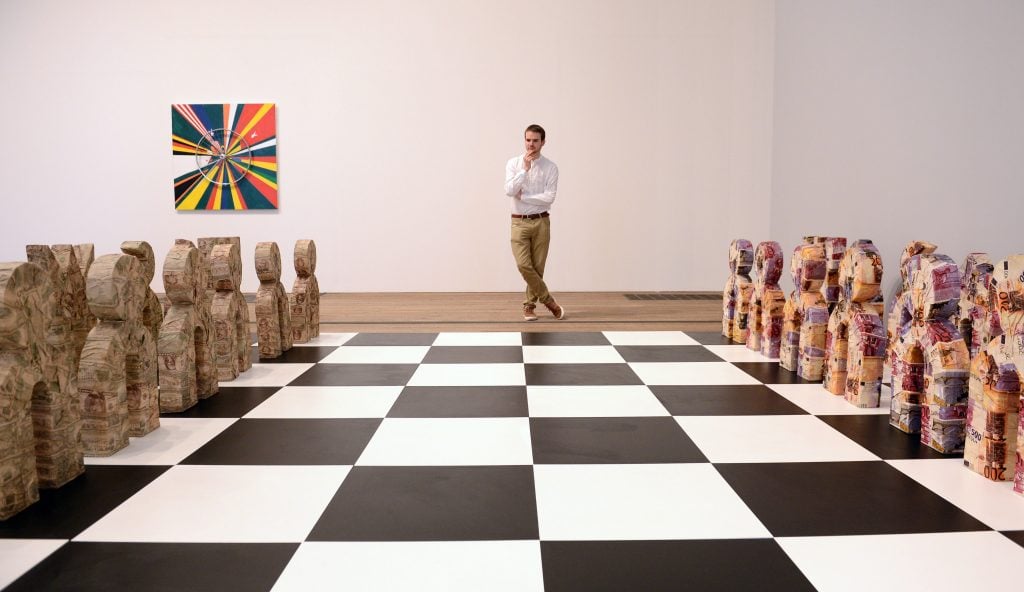
Meschac Gaba’s chess set as part of the installation “Game Room” at Tate. Photo by Stefan Rousseau/PA Images via Getty Images.
Artwork inducements have become essential in an environment where donors are growing more reluctant to part with their cash. A recent study showed that more than a third of Americans plan to give less to charitable causes in 2021 than they have in the past, or cease philanthropic giving entirely.
In the UK, a recent report by the National Campaign for the Arts showed that institutions are increasingly reliant on individual donations amid a 35 percent drop in public arts funding since 2008 and a 39 percent drop in corporate sponsorship since 2013. Meanwhile, philanthropic giving itself has fallen by 10 percent over the past three years.
All this is on top of the fact that public-facing institutions have recently been subject to more serious scrutiny over the sources of their benefactors’ wealth, causing some donors to pull back. Under pressure from activists, the Sackler Trust and the Dr. Mortimer and Theresa Sackler Foundation paused all philanthropic giving last year, while Warren Kanders, the president of a company that sells tear gas, was ousted from the Whitney’s board of trustees. When the director of the Serpentine, Yana Peel, was pushed out last June, she warned that these types of campaigns “risk an erosion of private support” for the art community.
Whether or not that turns out to be an existential threat, erosion of private support has intensified in lockdown. Swanky fundraising galas are (obviously) off the table, while many high-net-worth individuals are facing competing demands for their largesse from causes relating to the global health situation.
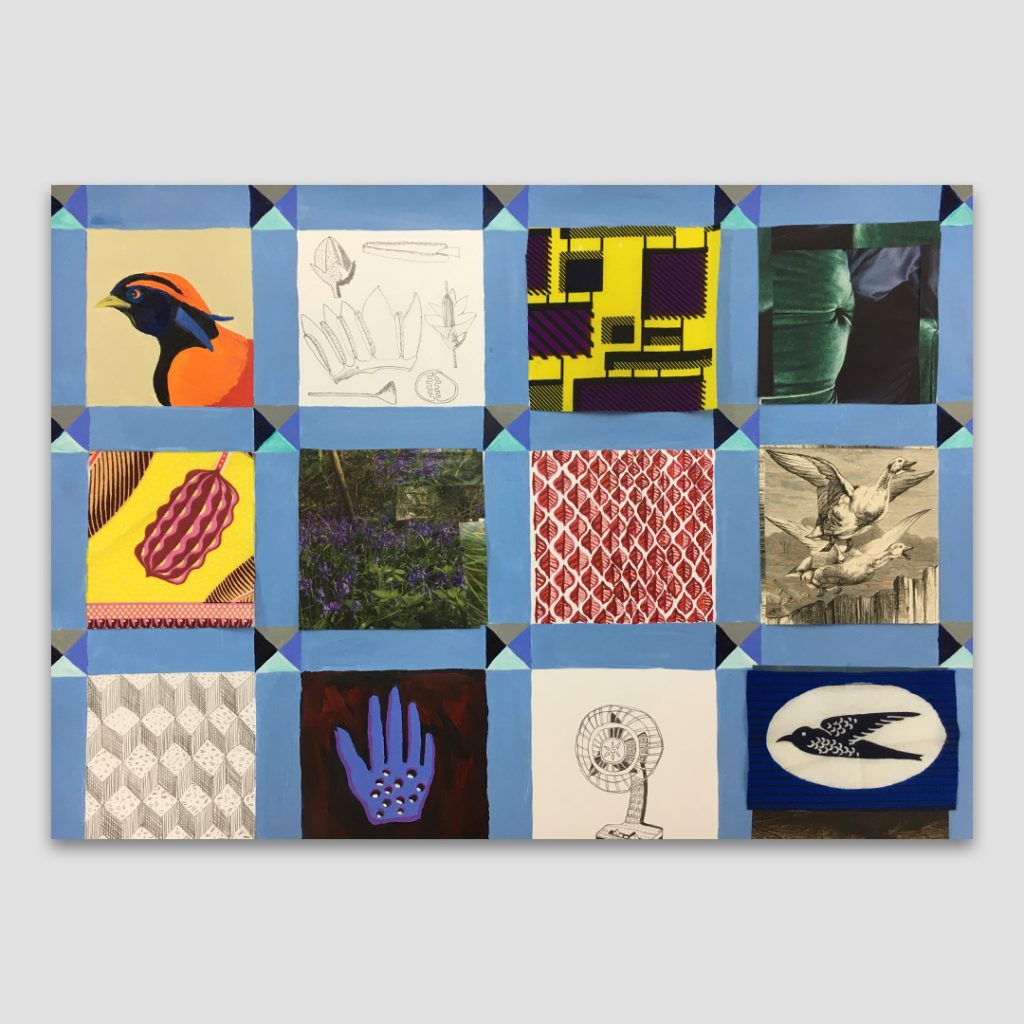
Lubaina Himid, The Blanket of Reasonable Luxury (2020). Limited-edition signed print, from a painting made especially for the #TogetherForMuseums campaign. Courtesy Art Fund.
A Call to Artists
It is against this backdrop that artists are being wheeled out to re-inspire and re-engage wealthy patrons, as well as the general public, to donate. “Rewards, whether artist works or unique events, are a popular way to generate support for [fundraising] campaigns, allowing people to donate to an important cause but get something brilliant back too,” a spokesperson for the UK charity Art Fund tells Artnet News.
The charity has launched its own fundraiser called Together for Museums, which is hoping to crowdfund £1 million to help UK art institutions through the current crisis. Incentives range from a set of David Shrigley tea towels (distributed to those who donate £15) to a limited-edition print by Anish Kapoor (£4,000).
Using this approach, the charity managed to raise over £3.8 million earlier this year to save the home and garden of visionary artist and filmmaker Derek Jarman. Nearly three quarters of the 8,397 donors to that project selected a reward. To date, its current fundraiser has attracted £336,071, with 82 days left in the campaign.
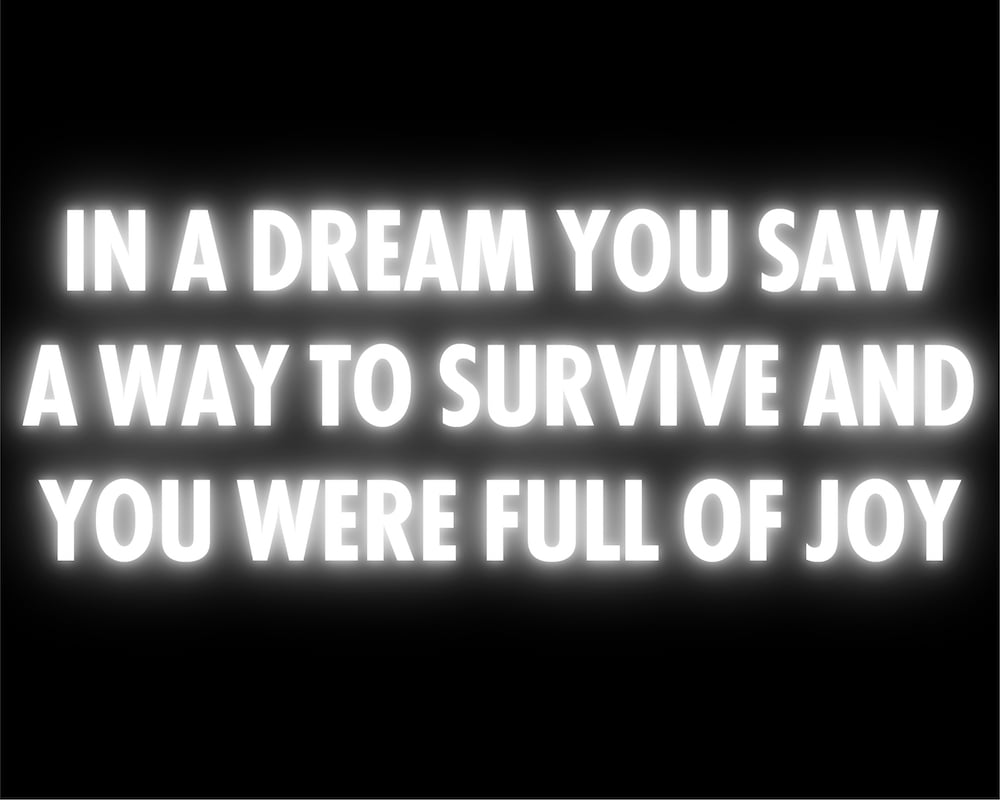
Jenny Holzer, from Survival 1983-85, (2020). © 2020 Jenny Holzer, member Artist Rights Society (ARS). Photo: Graham Kelman.
The strategy is being deployed at higher levels of the market as well. The mega-gallery Hauser & Wirth put together its own selling show to raise money for institutions in New York. More than 100 artists have donated work to the Artists for New York initiative, with the proceeds split between 16 visual arts organizations and charitable nonprofits from the Studio Museum in Harlem to the Dia Art Foundation.
According to gallery co-president Marc Payot, the initiative, which launched in October and is still underway, has already raised millions of dollars. While “the community engagement and philanthropic activity of our gallery’s artists has always been quite robust,” Payot tells Artnet News, the gallery has “certainly seen this activity increase across the board” during lockdown.
Patrick Charpenel, the executive director of El Museo del Barrio, one of the beneficiaries of the fundraiser, says that artist-driven initiatives have “complemented” the institution’s ongoing efforts—particularly important for a museum that does not have the luxury of an endowment.
Similarly, London’s Royal Academy—which, unlike many UK institutions, does not receive funding from the government—has benefitted from artists’ generosity. Some 100 artists created a special portfolio of new work to raise money during the first lockdown, and Grayson Perry has also designed a plate to incentivize donations of £1,000 or more. Many artists have also opted to donate more than the typical 30 percent commission the RA takes from sales at its annual Summer Exhibition (held exceptionally, this year, in the winter).
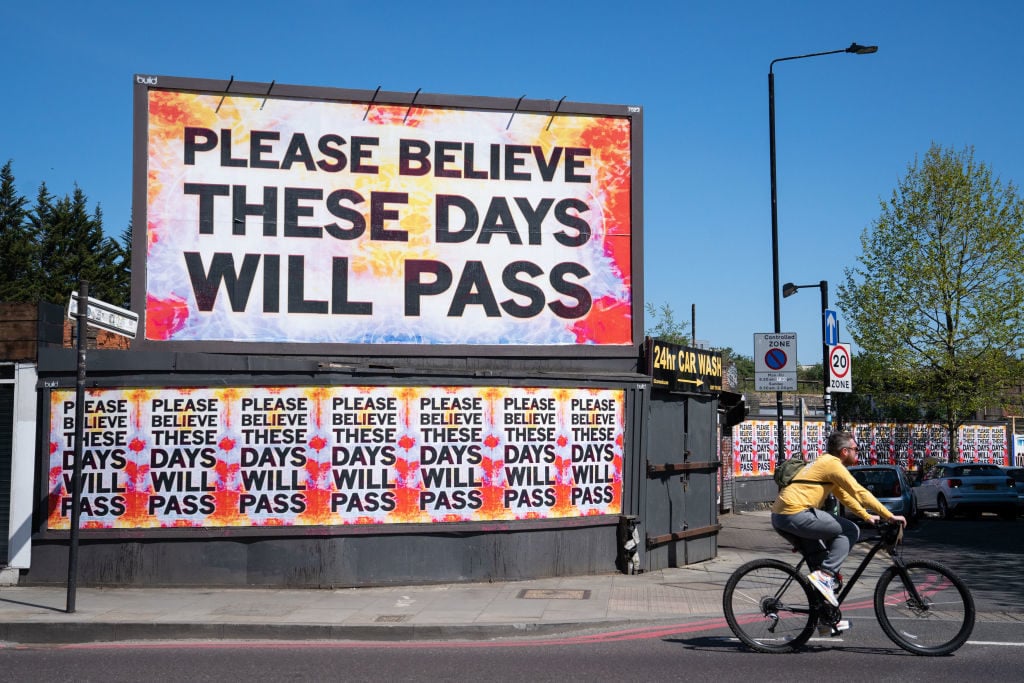
A cyclist rides past a billboard by the artist Mark Titchner in Shoreditch, east London. Photo by Dominic Lipinski/PA Images via Getty Images.
A Heavy Burden
For artists who are already suffering income loss from postponed or cancelled exhibitions, this burden is not an easy one to bear.
In donating a work to a charity auction, there is a risk that it may sell for below market value or not sell at all, devaluing the artist’s market. To boot, artists seldom enjoy the perks of a tax deduction.
In the UK, gifts of art to charity generally do not qualify for income tax relief, so artists can’t claim deductions for the full market value of their work. “HMRC’s [the UK equivalent of the IRS] concern is that if the artwork is overvalued, the donor would receive too much income tax relief,” Amanda Gray, a lawyer at Mishcon de Reya LLP, tells Artnet News.
While it is sometimes possible to claim a deduction on the fair market value of the donated artwork in the US, there are often strict conditions attached, which Gray says generally won’t be met if the donor is the artist or the art is sold at a charity sale.
In other words, if an artist donates a work of art that would normally sell through their gallery for $50,000, they might only be able to deduct $500—the cost of materials—from their taxes. If a collector donated the same work, Gray says, the rules are “generally more relaxed.”
Creating artwork is not the only way artists are boosting institutions, either. They also invest time, inviting donors to studio visits to engage patrons.
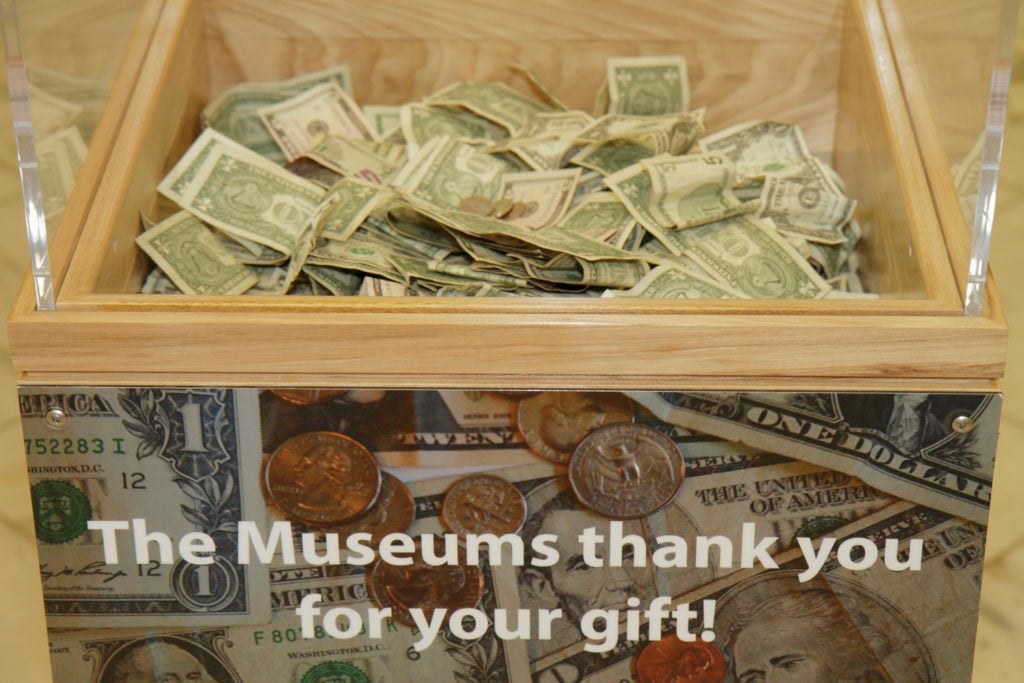
Donation box inside the National Portrait Gallery. Photo by: Jeffrey Greenberg/Universal Images Group via Getty Images.
Still, Rashid Johnson—who recently donated work to Artists for New York, auctioned off a studio visit at the Bronx Museum gala, and donated work to a Christie’s auction benefiting the Storm King Art Center—says he is happy to support the important work that institutions do within the art ecosystem.
More often than not, Johnson says, he is even able to track his donation to see which artists he was able to help—often, those who lack the financial backing of a gallery.
Museums seem to understand that relying on artists is not a perfect, or necessarily sustainable, solution. “I think that institutions recognize a lot of times that they would prefer a different strategy,” Johnson notes, “but especially smaller institutions have limited options available to them.”
